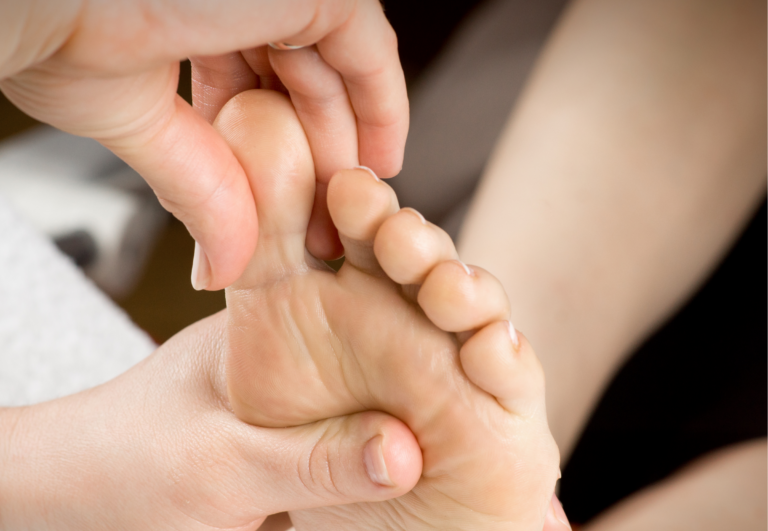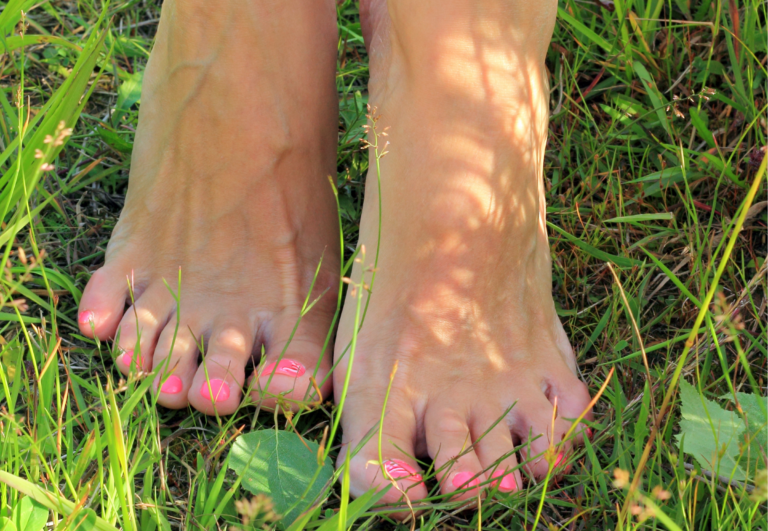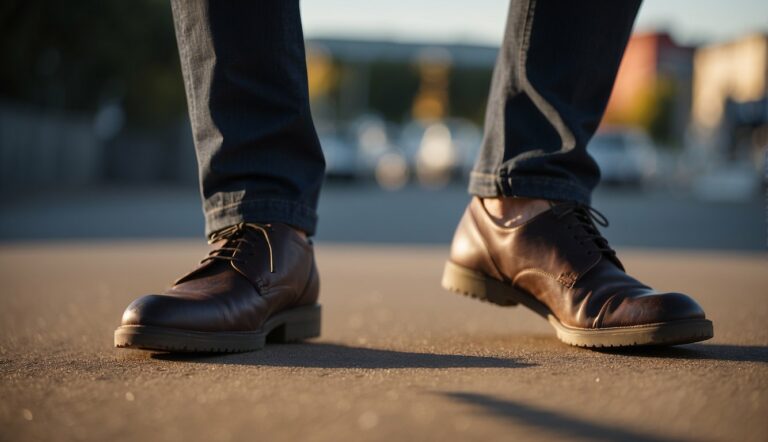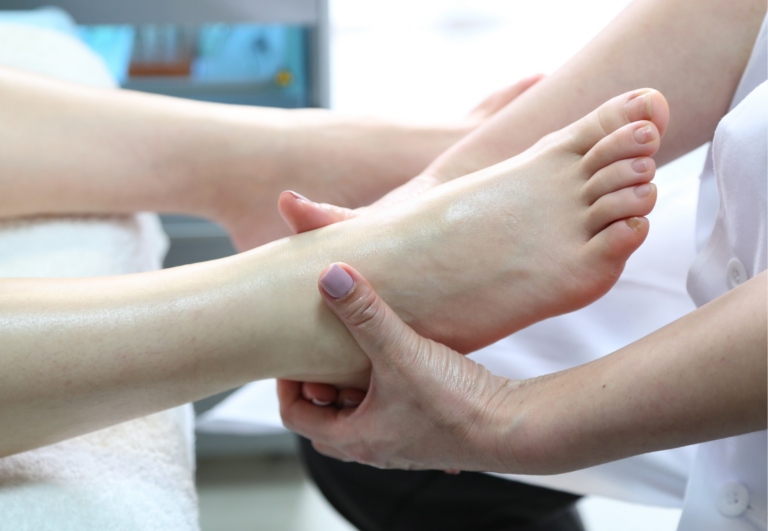Toe Spacers for Hallux Limitus: Effective Pain Relief and Mobility Improvement
Having personal experience in utilizing toe spacers to alleviate foot discomfort, I’ve found them to be a significant relief for those suffering from hallux limitus. The condition hallux limitus involves inflammation and stiffness of the big toe joint, making movements like walking or running challenging. Toe spacers are an accessory crafted to address this by creating separation between the toes, promoting a more natural toe alignment which can reduce pressure on the big toe joint.
In the landscape of hallux limitus treatment, toe spacers stand out as a minimally invasive tool. They work by gently encouraging the proper positioning of the big toe, which can help to manage pain and improve foot function. While they’re no magical cure-all, many find toe spacers to be beneficial when used as part of an overall treatment plan that may include rest, proper footwear, and physical therapy.
Establishing a daily routine that incorporates toe spacers can make a noticeable difference. They can be especially useful during rest periods or when engaging in activities that don’t place excessive strain on the feet. Remember, while toe spacers can provide support, it’s always wise to consult with a healthcare professional about the most effective treatment plan for your individual case of hallux limitus.
What Is Hallux Limitus?
In exploring hallux limitus, it is crucial to understand its causes, identify symptoms, and recognize its progressive nature. My experience with toe spacers has shown me that addressing the underlying foot anatomy issues is key.
Causes and Risk Factors
Hallux limitus is often caused by a combination of factors. Osteoarthritis can lead to this condition, as can rheumatoid arthritis and gout which trigger joint inflammation. Here, I’ve seen that:
- Genetics: A family history may predispose individuals.
- Foot Anatomy: Abnormalities in the structure of the foot, like the first metatarsal bone’s angle, can be contributing factors.
Symptoms and Diagnosis
Knowing the signs of hallux limitus is essential:
- Pain and Stiffness: The big toe joint experiences pain, particularly during activities.
- Inflammation: Obvious signs include redness and swelling.
Diagnosis typically involves:
- Physical Examination: Check for motion range and pain in the big toe.
- X-ray Analysis: Reveals potential bone spurs and joint space narrowing.
Stages of Hallux Limitus
Hallux limitus progresses through stages:
- Mild: Some stiffness and pain, especially after long periods of rest or stress on the joint.
- Moderate: Increased pain and stiffness, with bone spurs possible.
- Severe: The toe’s range of motion becomes greatly limited; arthritic condition is evident.
Bone spurs and inflammation aggravate the condition, underlining the importance of early detection and management.
Non-Surgical Treatment Options
Non-surgical treatments for hallux limitus focus on reducing pain, increasing motion, and improving footwear. These approaches aim to manage symptoms and improve a person’s quality of life.

Orthotics and Footwear Adjustments
I find that personalized orthotics can alleviate a lot of discomfort caused by hallux limitus. By redistributing pressure away from the big toe joint, these devices can reduce stiffness and pain during walking. When it comes to footwear, it’s crucial to choose shoes with a wide toe box and soft insoles to reduce pressure on the toe.
- Orthotics: Custom-designed, to address specific foot structure.
- Footwear: Must ensure a comfortable fit and provide adequate support.
Physical Therapy and Exercises
Engaging in physical therapy and specific exercises increases flexibility and strengthens the muscles around the big toe. Such activities typically focus on:
- Stretching exercises: To maintain joint motion and prevent stiffness.
- Strengthening exercises: To support the foot’s arch and improve overall stability.
A podiatrist or physical therapist can provide a regimen tailored to your condition’s specifics.
Medications and Injections
For pain and inflammation, options like anti-inflammatory medications can offer relief. In more severe cases, corticosteroid injections might be recommended by a podiatrist to reduce swelling and pain. It’s important to remember that these are temporary measures and should be combined with other treatments for optimal results.
- Anti-inflammatory medications: Like ibuprofen, to manage pain and reduce inflammation.
- Corticosteroid injections: Administered by a healthcare professional for targeted relief.
Surgical Interventions
In my experience with toe spacers and hallux limitus, I’ve come to understand that while non-surgical management can be effective, some cases eventually require surgical intervention to alleviate pain and restore function.
When Surgery Is Needed
Surgery for hallux limitus is generally considered when conservative treatments, such as toe spacers, physical therapy, and medications, fail to provide adequate relief, or when the joint’s function worsens significantly. If everyday activities become painful despite these efforts, a healthcare provider may suggest exploring surgical options.
Types of Hallux Limitus Surgery
Several surgeries can address hallux rigidus, each with specific goals:
- Cheilectomy: a procedure focusing on removing bone spurs and aiding joint movement.
- Arthrodesis: where the joint is fused to reduce pain, usually recommended when the joint damage is severe.
- Joint replacement: involves replacing the damaged parts of the joint with artificial components.
| Surgery Type | Description | Goal |
|---|---|---|
| Cheilectomy | Removing bone spurs and excess bone to improve movement | Increase flexibility, reduce pain |
| Arthrodesis | Fusing the bones to eliminate joint motion | Reduce pain, improve stability |
| Joint replacement | Replacing the damaged joint with an artificial implant | Reduce pain, retain some function |
Recovery Process
Recovery varies by the type of surgery. Typically, patients can expect:
- A period of immobilization to allow the joint to heal.
- Physical therapy to restore movement and function.
- Follow-up visits to monitor the progress with a healthcare provider.
Guidelines for recovery might include:
- Immediate post-op: Rest, ice, compression, and elevation to manage swelling.
- Weeks 1-6: Possible use of crutches or a walking boot.
- Months 1-6: Gradual return to activities as guided by the doctor.
Remember, the recovery timeline can vary greatly from person to person, and your healthcare provider will offer the most tailored advice for your specific situation.
The Role of Toe Spacers in Hallux Limitus
I’ve found that using toe spacers for hallux limitus can be beneficial in managing discomfort and improving the function of the big toe. Let’s take a closer look at how these simple tools can assist.
Benefits of Toe Spacers
Toe spacers serve to alleviate pressure on the big toe by maintaining proper alignment, which can help increase the range of motion in the affected metatarsophalangeal joint. Through consistent use, they may:
- Prevent further misalignment: Ensuring the toes remain in a natural position helps prevent worsening of the condition.
- Reduce discomfort: By decreasing the pressure on the joint, toe spacers can help minimize pain during activity.
- Improve flexibility: Spacers can assist in maintaining flexibility in the toes, specifically in the first metatarsophalangeal joint, or the big toe joint, where motion is limited due to hallux limitus.
Selecting the Right Toe Spacer
Choosing the appropriate toe spacer involves considering fit and comfort. It’s important to look for:
- Material: Go for soft, flexible materials that provide cushioning without irritation.
- Size: Ensure the toe spacer is neither too tight nor too loose. It should secure the big toe without causing additional pressure or discomfort.
- Design: Some toe spacers are designed for wear during the day, while others are intended for nighttime use. Select based on your lifestyle and orthotic management needs.
Usage Guidelines
To maximize the benefits of toe spacers, I recommend the following usage tips:
- Start slowly, wearing the spacers for short periods to acclimate your toes to the new alignment.
- Gradually increase usage time as your comfort level improves.
- Follow any additional guidelines provided by your podiatrist, as they can tailor their advice to your specific condition and gear needs.
Consistent use as part of an orthotic management strategy can play a role in managing hallux limitus, by maintaining proper toe alignment and aiding joint flexibility.
Lifestyle Modifications and Preventative Care
In managing hallux limitus, lifestyle changes are crucial. They can help prevent further damage to the foot, alleviate pain, and maintain mobility.
Activity Adjustments
I find that modifying daily activities can significantly reduce stress on the feet. For walking and running, choosing the right footwear is essential, as certain types like high heels or flip flops can worsen stiffness and pain. I recommend shoes with a wide toe box and good arch support to promote a healthier gait. It’s also beneficial to limit activities that exacerbate pain and to include low-impact exercises like swimming or cycling in your routine.
- Walking: Opt for supportive shoes; avoid high heels.
- Running: Seek cushioned footwear; monitor and adjust your gait.
- Exercise: Include low-impact activities to minimize foot stress.
Foot Care and Hygiene
Proper foot care is another aspect I emphasize. This includes keeping the feet clean and dry to avoid infections, which can aggravate hallux limitus. Regularly inspecting the feet for any changes or signs of stress is important, as well as keeping the nails trimmed straight across. In cold temperatures, keeping feet warm can help ease stiffness. Moreover, using toe spacers can aid in maintaining proper alignment and relieving pressure.
- Cleanliness: Maintain hygiene to prevent infections.
- Inspection: Regularly check feet for signs of stress or damage.
- Toe spacers: Use to help keep proper alignment and alleviate pressure.
Understanding and Managing Flare-Ups
Recognizing the onset of a flare-up allows me to manage symptoms effectively. Resting the foot and applying ice can lessen inflammation and discomfort. Weight management can also play a role in reducing the stress on the feet, thereby preventing flare-ups. When symptoms do occur, I avoid aggravating activities and focus on gentle stretching to maintain flexibility.
- Rest and Ice: Apply at the first sign of a flare-up to reduce inflammation.
- Weight Management: Keep a healthy weight to minimize stress on the feet.
- Gentle Stretching: Practice to maintain flexibility and manage stiffness.





